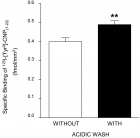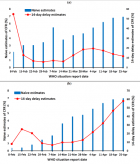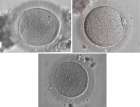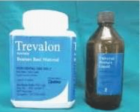Abstract
Thesis
Inhalation Technique among Patients with Chronic Obstructive Pulmonary Disease Visiting a Teaching Hospital, Chitwan
Chahana Bogati* and Dipendra Kandel
Published: 08 August, 2025 | Volume 9 - Issue 2 | Pages: 037-052
Background: Chronic Obstructive Pulmonary Disease (COPD) is a major cause of illness and death worldwide, and inhalers are often used to manage its symptoms. However, patients’ ability to use inhalers correctly is crucial for the effectiveness of treatment. Incorrect technique can lead to poor management of the disease and limit the effectiveness of the medication. This study aimed to assess the inhalation technique of patients with COPD who visited a teaching hospital in Chitwan.
Methodology: A descriptive cross-sectional study was conducted among patients with COPD who had been using a dry powder inhaler through a rotahaler device for at least 1 month and were attending the Medicine and Respiratory OPD of the teaching hospital in Chitwan. A convenience sampling technique was used to select a total of 103 participants. An observational checklist was used to assess inhalation technique, and a structured interview schedule was used to collect socio-demographic information. Descriptive statistics were used to analyze the obtained data in SPSS version 20 for Windows.
Findings: The mean age of the 103 respondents was 70.1 ± 9.56 years, and 62.1% of them were female. While 78.6% had observed a demonstration of the inhalation technique, only 5.8% of the respondents performed the inhalation technique correctly, and 94.2% performed it incorrectly. Only 22.3% of the participants were able to perform at least one critical step of the inhalation technique. The most commonly observed errors included placing the mouthpiece between the lips and teeth (20.4%), breathing out through the mouth (21.4%), and inhaling the powder forcefully and deeply (26.2%).
Conclusion: Patients with COPD attending the teaching hospital in Chitwan exhibited incorrect inhalation technique, which can affect the effectiveness of medication and disease management. Healthcare providers should emphasize critical steps and common mistakes to ensure that patients receive maximum benefit from their medication.
Read Full Article HTML DOI: 10.29328/journal.jprr.1001072 Cite this Article Read Full Article PDF
Keywords:
Dry Powder Inhaler, Inhalation Technique, Patients with COPD, Rotahaler
References
- World Health Organization. Chronic Obstructive Pulmonary Disease (COPD). Geneva: World Health Organization; 2022. Available from: https://www.who.int/news-room/fact-sheets/detail/chronic-obstructive-pulmonary-disease-(copd)
- Global Initiative for Chronic Obstructive Lung Disease (GOLD). Global Initiative for Chronic Obstructive Lung Disease Pocket Guide to COPD Diagnosis, Management, and Prevention: a Guide for Health Care Professionals. 2021. Available from: https://goldcopd.org/wp-content/uploads/2020/11/GOLD-2021-POCKET-GUIDE-v1.0-16Nov20_WMV.pdf
- Bousquet J, Dahl R, Khaltaev N. Global Alliance against Chronic Respiratory Diseases. Eur Respir J. 2007;29(2):233–239. Available from: https://doi.org/10.1183/09031936.00138606
- Bhandari GP, Angdembe MR, Dhimal M, Neupane S, Bhusal C. State of non-communicable diseases in Nepal. BMC Public Health. 2014;14(1):23. Available from: https://doi.org/10.1186/1471-2458-14-23
- Prasad B. Chronic Obstructive Pulmonary Disease (COPD). Int J Pharm Res Technol. 2020;10(1):67. Available from: https://www.ijprt.org/index.php/pub/article/view/122
- Hogg JC. Pathophysiology of airflow limitation in chronic obstructive pulmonary disease. Lancet. 2004;364(9435):709–721. Available from: https://doi.org/10.1016/S0140-6736(04)16900-6
- Rennard S, Decramer M, Calverley PMA, Pride NB, Soriano JB, Vermeire PA, Vestbo J. Impact of COPD in North America and Europe in 2000: Subjects’ perspective of Confronting COPD International Survey. Eur Respir J. 2002;20(4):799–805. Available from: https://doi.org/10.1183/09031936.02.03242002
- Kessler R, Partridge MR, Miravitlles M, Cazzola M, Vogelmeier C, Leynaud D, Ostinelli J. Symptom variability in patients with severe COPD: a pan-European cross-sectional study. Eur Respir J. 2011;37(2):264–272. Available from: https://doi.org/10.1183/09031936.00051110
- Agustí AGN. Systemic effects of Chronic Obstructive Pulmonary Disease. Proc Am Thorac Soc. 2005;2(4):367–370. Available from: https://doi.org/10.1513/PATS.200504-026SR
- Kempker JA, Abril MK, Chen Y, Kramer MR, Waller LA, Martin GS. The Epidemiology of Respiratory Failure in the United States 2002–2017: A Serial Cross-Sectional Study. Crit Care Explor. 2020;2(6):e0128. Available from: https://doi.org/10.1097/cce.0000000000000128
- Dolovich MB, Dhand R. Aerosol drug delivery: developments in device design and clinical use. Lancet. 2011;377:1032–1045. Available from: https://doi.org/10.1016/s0140-6736(10)60926-9
- Bonini M, Usmani OS. The importance of inhaler devices in the treatment of COPD. COPD Res Pract. 2015;1(1):1–9. Available from: https://doi.org/10.1186/S40749-015-0011-0
- Cochrane MG, Bala MV, Downs KE, Mauskopf J, Ben-Joseph RH. Inhaled corticosteroids for asthma therapy: patient compliance, devices, and inhalation technique. Chest. 2000;117(2):542–550. Available from: https://doi.org/10.1378/chest.117.2.542
- Bell JH, Hartley PS, Cox JSG. Dry powder aerosols I: a new powder inhalation device. J Pharm Sci. 1971;60(10):1559–1564. Available from: https://doi.org/10.1002/jps.2600601028
- Adhikari Baral M. Knowledge and practice of dry powder inhalation among patients with Chronic Obstructive Pulmonary Disease in a regional hospital, Nepal. Int J Gen Med. 2019:12–31. Available from: https://doi.org/10.2147/IJGM.S165659
- Ilic AD, Zugic V, Zvezdin B, Kopitovic I, Cekerevac I, Cupurdija V, et al. Influence of inhaler technique on asthma and COPD control: a multicenter experience. Int J Chron Obstruct Pulmon Dis. 2016;11(1):2509. Available from: https://doi.org/10.2147/COPD.S114576
- Price DB, Román-Rodríguez M, McQueen RB, Bosnic-Anticevich S, Carter V, Gruffydd-Jones K, et al. Inhaler errors in the CRITIKAL study: type, frequency, and association with asthma outcomes. J Allergy Clin Immunol Pract. 2017;5(4):1071–1081.e9. Available from: https://doi.org/10.1016/j.jaip.2017.01.004
- Global Initiative for Asthma (GINA). GINA Main Report. Global Initiative for Asthma; 2022. Available from: https://ginasthma.org/gina-reports/
- Lavorini F, Magnan A, Dubus JC, Voshaar T, Corbetta L, Broeders M, et al. Effect of incorrect use of dry powder inhalers on the management of patients with asthma and COPD. Respir Med. 2008;102(4):593–604. Available from: https://doi.org/10.1016/j.rmed.2007.11.003
- Hesselink AE, Penninx BWJH, Wijnhoven HAH, Kriegsman DMW, van Eijk JTM. Determinants of an incorrect inhalation technique in patients with asthma or COPD. Scand J Prim Health Care. 2001;19(4):255–260. Available from: https://doi.org/10.1080/02813430152706792
- Molimard M, Raherison C, Lignot S, Depont F, Abouelfath A, Moore N. Assessment of handling of inhaler devices in real life: an observational study in 3811 patients in primary care. J Aerosol Med. 2004;16(3):249–254. Available from: https://doi.org/10.1089/089426803769017613
- Diamond SA, Chapman KR. The impact of a nationally coordinated pharmacy-based asthma education intervention. Can Respir J. 2001;8(4):261–265. Available from: https://doi.org/10.1155/2001/380485
- Lenney J, Innes JA, Crompton GK. Inappropriate inhaler use: assessment of use and patient preference of seven inhalation devices. Respir Med. 2000;94:496–500. Available from: https://doi.org/10.1053/rmed.1999.0767
- Sapkota D, Amatya YR. Assessment of rotahaler inhalation technique among patients with chronic obstructive pulmonary disease in a teaching hospital of Nepal. J Kathmandu Med Coll. 2017;5(1):11–17. Available from: https://doi.org/10.3126/jkmc.v5i1.18259
- Usmani OS. Choosing the right inhaler for your asthma or COPD patient. Ther Clin Risk Manag. 2019;15:461. Available from: https://doi.org/10.2147/TCRM.S160365
- National Institutes of Health, National Heart, Lung, and Blood Institute. Morbidity & Mortality: 2012 Chart Book on Cardiovascular, Lung, and Blood Diseases. 2012. Available from: https://www.astrazeneca.com/content/dam/az/media-centre-docs/article_files/articles-2015/Documents/2012_ChartBook_508.pdf
- Sanchis J, Gich I, Pedersen S. Systematic review of errors in inhaler use: has patient technique improved over time? Chest. 2016;150(2):394–406. Available from: https://doi.org/10.1016/j.chest.2016.03.041
- Miravitlles M, Soler-Cataluña JJ, Alcázar B, Viejo JL, García-Río F. Factors affecting the selection of an inhaler device for COPD and the ideal device for different patient profiles: Results of EPOCA Delphi consensus. Pulm Pharmacol Ther. 2018;48:97–103. Available from: https://doi.org/10.1016/j.pupt.2017.10.006
- Maricoto T, Santos D, Carvalho C, Teles I, Correia-de-Sousa J, Taborda-Barata L. Assessment of poor inhaler technique in older patients with asthma or COPD: a predictive tool for clinical risk and inhaler performance. Drugs Aging. 2020;37(8):605–616. Available from: https://doi.org/10.1007/S40266-020-00779-6
- Goodman DE, Israel E, Rosenberg M, Johnston R, Weiss ST, Drazen JM. The influence of age, diagnosis, and gender on proper use of metered-dose inhalers. Am J Respir Crit Care Med. 2012;150(5):1256–1261. Available from: https://doi.org/10.1164/AJRCCM.150.5.7952549
- Pothirat C, Chaiwong W, Phetsuk N, Pisalthanapuna S, Chetsadaphan N, Choomuang W. Evaluating inhaler use technique in COPD patients. Int J Chron Obstruct Pulmon Dis. 2015;10:1291. Available from: https://doi.org/10.2147/copd.s85681
- Palen J, Klein JJ, van Herwaarden CLA, Zielhuis GA, Seydel ER. Multiple inhalers confuse asthma patients. Eur Respir J. 1999;14(5):1034–1037. Available from: https://doi.org/10.1183/09031936.99.14510349
- Calzetta L, Aiello M, Frizzelli A, Ritondo BL, Pistocchini E, Rogliani P, et al. Impact of sex on proper use of inhaler devices in asthma and COPD: a systematic review and meta-analysis. Pharmaceutics. 2022;14(8). Available from: https://doi.org/10.3390/pharmaceutics14081565
- Melani AS, Bonavia M, Cilenti V, Cinti C, Lodi M, Martucci P, et al. Inhaler mishandling remains common in real life and is associated with reduced disease control. Respir Med. 2011;105(6):930–938. Available from: https://doi.org/10.1016/j.rmed.2011.01.005
- Virchow JC, Crompton GK, Dal Negro R, Pedersen S, Magnan A, Seidenberg J, et al. Importance of inhaler devices in the management of airway disease. Respir Med. 2008;102(1):10–19. Available from: https://doi.org/10.1016/j.rmed.2007.07.031
- Singh D, Agusti A, Anzueto A, Barnes PJ, Bourbeau J, Celli BR, et al. Global strategy for the diagnosis, management, and prevention of chronic obstructive lung disease: the GOLD science committee report 2019. Eur Respir J. 2019;53(5):1900164. Available from: https://doi.org/10.1183/13993003.00164-2019
- Maya R, Shakya N. Assessment of Rotahaler inhalation technique among patients with COPD or asthma at Manipal teaching hospital, Pokhara. Int J Nurs Educ. 2018. Available from: https://www.researchgate.net/publication/327489535_Assessment_of_rotahaler_inhalation_technique_among_patients_with_COPD_or_asthma_at_Manipal_teaching_hospital_Pokhara
- Shrestha S, Shrestha S, Baral MR, Bhandari S, Chand S, Tamrakar R, et al. Evaluation of inhalation technique in patients using a dry powder device (DPI) at the chest clinic in Dhulikhel Hospital – Kathmandu University Hospital, and the effect of patient education on it. Clin Med (Lond). 2019;19(Suppl 3):64–66. Available from: https://doi.org/10.7861/clinmedicine.19-3s-s64
- Poudel RS, Piryani RM, Shrestha S, Prajapati A. Benefit of hospital pharmacy intervention on the current status of dry powder inhaler technique in patients with asthma and COPD: a study from the Central Development Region, Nepal. Integr Pharm Res Pract. 2017;6:7–13. Available from: https://doi.org/10.2147/iprp.s119202
- Roy C. The Roy adaptation model: the definitive statement. Norwalk (CT): Appleton & Lange; 1991.
- Duncan D. Chronic obstructive pulmonary disease: an overview. Br J Nurs. 2016;25(7):360–366. Available from: https://doi.org/10.12968/bjon.2016.25.7.360
- Barnes PJ. Chronic obstructive pulmonary disease. N Engl J Med. 2000;343(4):269–280. Available from: https://doi.org/10.1056/NEJM200007273430407
- Anthonisen N, Bailey WC, Barnes PJ, Clark T, Fabbri L, Fukuchi Y, et al. Global strategy for the diagnosis, management, and prevention of chronic obstructive pulmonary disease. Am J Respir Crit Care Med. 2001;163(5):1256–1276. Available from: https://doi.org/10.1164/AJRCCM.163.5.2101039
- Hikichi M, Mizumura K, Maruoka S, Gon Y. Pathogenesis of chronic obstructive pulmonary disease (COPD) induced by cigarette smoke. J Thorac Dis. 2019;11(Suppl 17):S2129–S2140. Available from: https://doi.org/10.21037/JTD.2019.10.43
- Wang Y, Xu J, Meng Y, Adcock IM, Yao X. Role of inflammatory cells in airway remodeling in COPD. Int J Chron Obstruct Pulmon Dis. 2018;13:3341–3348. Available from: https://doi.org/10.2147/COPD.S176122
- Tkac J, Man SFP, Sin DD. Systemic consequences of COPD. Ther Adv Respir Dis. 2007;1(1):47–59. Available from: https://doi.org/10.1177/1753465807082374
- Ritchie AI, Wedzicha JA. Definition, causes, pathogenesis, and consequences of chronic obstructive pulmonary disease exacerbations. Clin Chest Med. 2020;41(3):421–438. Available from: https://doi.org/10.1016/J.CCM.2020.06.007
- Vogelmeier CF, Criner GJ, Martinez FJ, Anzueto A, Barnes PJ, Bourbeau J, et al. Global strategy for the diagnosis, management, and prevention of chronic obstructive lung disease 2017 report. Am J Respir Crit Care Med. 2017;195(5):557–582. Available from: https://doi.org/10.1164/rccm.201701-0218pp/suppl_file/disclosures.pdf
- Borghardt JM, Kloft C, Sharma A. Inhaled therapy in respiratory disease: the complex interplay of pulmonary kinetic processes. Can Respir J. 2018;2018:1–11. Available from: https://www.hindawi.com/journals/crj/2018/2732017/
- Labiris NR, Dolovich MB. Pulmonary drug delivery. Part I: physiological factors affecting the therapeutic effectiveness of aerosolized medications. Br J Clin Pharmacol. 2003;56(6):588–599. Available from: https://doi.org/10.1046/j.1365-2125.2003.01892.x
- Labiris NR, Dolovich MB. Pulmonary drug delivery. Part II: the role of inhalant delivery devices and drug formulations in the therapeutic effectiveness of aerosolized medications. Br J Clin Pharmacol. 2003;56(6):600–612. Available from: https://doi.org/10.1046/j.1365-2125.2003.01893.x
- Padmanabhan M, Tamilarasu K, Rajaram M, Batmanabane G. Inadequate inhaler technique, an everlasting problem, is associated with poor disease control – a cross-sectional study. Adv Respir Med. 2019;87(4):217–225.
- Kaplan A, Price D. Matching inhaler devices with patients: the role of the primary care physician. Can Respir J. 2018;2018:1–9. Available from: https://doi.org/10.1155/2018/9473051
- Kocks JWH, Chrystyn H, van der Palen J, Thomas M, Yates L, Landis SH, et al. Systematic review of the association between critical errors in inhalation and health outcomes in asthma and COPD. NPJ Prim Care Respir Med. 2018;28(1). Available from: https://doi.org/10.1038/s41533-018-0110-x
- Çakmakli S, Özdemir A, Fırat H, Aypak C. An evaluation of the use of inhalers in asthma and chronic obstructive pulmonary disease. J Taibah Univ Med Sci. 2023. Available from: https://doi.org/10.1016/j.jtumed.2023.01.001
- Harb HS, Ibrahim Laz N, Rabea H, Abdelrahim MEA. Determinants of incorrect inhaler technique in chronic obstructive pulmonary disease patients. Int J Clin Pract. 2021;75(6). Available from: https://doi.org/10.1111/IJCP.14073
- Jain SRK. Impact of educational program on inhalational device usage techniques among the patients suffering from asthma. J Clin Diagn Res. 2021. Available from: https://doi.org/10.7860/jcdr/2021/51847.15601
- Shankar DM, Shrivastava DPM, Kumar DS. Dry powder inhalation knowledge and practices among COPD patients in Bihar: a questionnaire-based study. Eur J Mol Clin Med. 2021;8(3):4576–4583.
- Padmini AK, Basheer S. Evaluating metered dose inhaler and dry powder inhaler use technique among bronchial asthma and COPD patients attending a tertiary health care centre in South India. Int J Community Med Public Health. 2021;8(9):4545. Available from: https://doi.org/10.18203/2394-6040.ijcmph20213567
- Thakkar K, Patel R, Abraham R, Shah A, Rajput H, Chandrakar V. A study on effectiveness and outcomes of educational inhaler technique counselling in the respiratory department by a clinical pharmacist. Indian J Pharm Pract. 2021;14(4):251–258.
- Sanaullah T, Khan S, Masoom A, Mandokhail ZK, Sadiqa A, Malik MI. Inhaler use technique in chronic obstructive pulmonary disease patients: errors, practices, and barriers. Cureus. 2020;12(9). Available from: https://doi.org/10.7759/cureus.10569
- Suthar J, Patel ZA, Shelat B. Assessment of inhalation techniques in COPD and asthma patients using metered dose inhaler and rota-haler. Indian J Pharm Pract. 2019;12. Available from: https://www.researchgate.net/publication/335931675_Assessment_of_Inhalation_Techniques_in_COPD_and_Asthma_Patients_using_Metered_Dose_Inhaler_and_Rota-haler
- Tajes-González YM, Gulín-Dávila J, Castellano-Copa P. Inhalation technique assessment and evaluation for the need of pharmaceutical intervention in respiratory pathologies. Farm Hosp. 2019;43(6):202–207. Available from: https://doi.org/10.7399/FH.11296
- Khan GM, Badri P, Parbati T, Anita D, Atul A, Deepak P, et al. Intervention on inhalation technique of rotahaler in patients with chronic obstructive pulmonary disease and asthma. Asian J Pharm Sci. 2016;11(1):81–82. Available from: https://doi.org/10.1016/j.ajps.2015.11.112
- Roggeri A, Micheletto C, Roggeri DP. Inhalation errors due to device switch in patients with chronic obstructive pulmonary disease and asthma: critical health and economic issues. Int J Chron Obstruct Pulmon Dis. 2016;11(1):597. Available from: https://doi.org/10.2147/COPD.S103335
- Capanoglu M, Dibek Misirlioglu E, Toyran M, Civelek E, Kocabas CN. Evaluation of inhaler technique, adherence to therapy, and their effect on disease control among children with asthma using metered dose or dry powder inhalers. J Asthma. 2015;52(8):838–845. Available from: https://doi.org/10.3109/02770903.2015.1028075
- Pun S, Prasad GK, Bharati L. Assessment of inhalation techniques in COPD patients using metered-dose inhaler and rotahaler at a tertiary care hospital in Nepal. Int Res J Pharm. 2015;6(5):288–293. Available from: https://www.researchgate.net/publication/278770888_ASSESSMENT_OF_INHALATION_TECHNIQUES_IN_COPD_PATIENTS_USING_METERED-DOSE_INHALER_AND_ROTAHALER_AT_A_TERTIARY_CARE_HOSPITAL_IN_NEPAL
- Arora P, Kumar L, Vohra V, Sarin R, Jaiswal A, Puri MM, et al. Evaluating the technique of using an inhalation device in COPD and bronchial asthma patients. Respir Med. 2014;108(7):992–998. Available from: https://doi.org/10.1016/j.rmed.2014.04.021
- Luiza M, Souza M, Meneghini AC, Ferraz É, Oliveira Vianna E, Carvalho Borges M. Knowledge of and technique for using inhalation devices among asthma patients and COPD patients. Braz J Pulmonol. 2009;35(9):824–831. Available from: https://doi.org/10.1590/s1806-37132009000900002
- Beerendonk I, Mesters I, Mudde AN, Tan TD. Assessment of the inhalation technique in outpatients with asthma or chronic obstructive pulmonary disease using a metered-dose inhaler or dry powder device. J Asthma. 1998;35(3):273–279. Available from: https://doi.org/10.3109/02770909809068218
- Cochrane WG. Sampling techniques. 3rd ed. New York: John Wiley & Sons; 1977. Available from: https://www.scirp.org/reference/ReferencesPapers?ReferenceID=1390266
- S. Food and Drug Administration. Safety testing of drug metabolites. 2016. Available from: https://www.fda.gov/regulatory-information/search-fda-guidance-documents/safety-testing-drug-metabolites
- Bai S, Gupta V, Ahsan F. Inhalable lactose-based dry powder formulations of low molecular weight heparin. J Aerosol Med Pulm Drug Deliv. 2010;23(2):97–104. Available from: https://doi.org/10.1089/jamp.2009.0745
- Bhushan B, Singh K, Abraham J, Goyal D, Bhatnager A, Chungath JT, et al. Role of educational intervention with practical demonstration in improving inhaler technique. Int J Adv Med. 2019;6(3):840. Available from: https://doi.org/10.18203/2349-3933.IJAM20192249
- Broeders MEAC, Sanchis J, Levy ML, Crompton GK, Dekhuijzen PNR. The ADMIT series—Issues in inhalation therapy. 2) Improving technique and clinical effectiveness. Prim Care Respir J. 2009;18(2):76–82. Available from: https://doi.org/10.4104/pcrj.2009.00025
- Crompton GK, Barnes PJ, Broeders M, Corrigan C, Corbetta L, Dekhuijzen R, et al. The need to improve inhalation technique in Europe: a report from the Aerosol Drug Management Improvement Team. Respir Med. 2006;100(9):1479–1494. Available from: https://doi.org/10.1016/j.rmed.2006.01.008
- Rau LJ. Practical problems with aerosol therapy in COPD. Respir Care. 2006;51(2). Available from: https://pubmed.ncbi.nlm.nih.gov/16441960/
- Keeley D. Ignorance about teaching inhaler technique is widespread among healthcare professionals. BMJ. 2014;348(jun05 11):g3452–g3452. Available from: https://doi.org/10.1136/bmj.g3452
- Plaza V, Sanchis J, Roura P, Molina J, Calle M, Quirce S, et al. Physicians’ knowledge of inhaler devices and inhalation techniques remains poor in Spain. J Aerosol Med Pulm Drug Deliv. 2012;25(1):16–22. Available from: https://doi.org/10.1089/jamp.2011.0895
- Rootmensen GN, van Keimpema ARJ, Jansen HM, de Haan RJ. Predictors of incorrect inhalation technique in patients with asthma or COPD: a study using a validated videotaped scoring method. J Aerosol Med Pulm Drug Deliv. 2010;23(5):323–328. Available from: https://doi.org/10.1089/jamp.2009.0785
- Global Strategy for Asthma Management and Prevention Updated. 2010. Available from: https://ginasthma.org/wp-content/uploads/2019/01/2010-GINA.pdf
Figures:
Similar Articles
Recently Viewed
-
Validation of Prognostic Scores for Attempted Vaginal Delivery in Scar UterusMouiman Soukaina*,Mourran Oumaima,Etber Amina,Zeraidi Najia,Slaoui Aziz,Baydada Aziz. Validation of Prognostic Scores for Attempted Vaginal Delivery in Scar Uterus. Clin J Obstet Gynecol. 2025: doi: 10.29328/journal.cjog.1001185; 8: 023-029
-
Mapping the Psychosocial: Introducing a Standardised System to Improve Psychosocial Understanding within Mental HealthMatthew Bretton Oakes*. Mapping the Psychosocial: Introducing a Standardised System to Improve Psychosocial Understanding within Mental Health. Arch Psychiatr Ment Health. 2024: doi: 10.29328/journal.apmh.1001051; 8: 012-019
-
Drugs and Violence: High Risk BehaviorNorman Miller*,Thersilla Oberbarnschedit. Drugs and Violence: High Risk Behavior. Arch Psychiatr Ment Health. 2025: doi: 10.29328/journal.apmh.1001057; 9: 001-009
-
Acute Gas Toxicity at Work: A Tale of Two Cases with Review of LiteratureRishabh Kumar Singh,Jitender Pratap Singh,Manjari Kishore*,HM Garg. Acute Gas Toxicity at Work: A Tale of Two Cases with Review of Literature. J Forensic Sci Res. 2025: doi: 10.29328/journal.jfsr.1001091; 9: 125-128
-
The Need of Wider and Deeper Skin Biopsy in Verrucous Carcinoma of the SoleLuca Damiani*,Giuseppe Argenziano,Andrea Ronchi,Francesca Pagliuca,Emma Carraturo,Vincenzo Piccolo,Gabriella Brancaccio. The Need of Wider and Deeper Skin Biopsy in Verrucous Carcinoma of the Sole. Ann Dermatol Res. 2025: doi: 10.29328/journal.adr.1001036; 9: 005-007
Most Viewed
-
Feasibility study of magnetic sensing for detecting single-neuron action potentialsDenis Tonini,Kai Wu,Renata Saha,Jian-Ping Wang*. Feasibility study of magnetic sensing for detecting single-neuron action potentials. Ann Biomed Sci Eng. 2022 doi: 10.29328/journal.abse.1001018; 6: 019-029
-
Evaluation of In vitro and Ex vivo Models for Studying the Effectiveness of Vaginal Drug Systems in Controlling Microbe Infections: A Systematic ReviewMohammad Hossein Karami*, Majid Abdouss*, Mandana Karami. Evaluation of In vitro and Ex vivo Models for Studying the Effectiveness of Vaginal Drug Systems in Controlling Microbe Infections: A Systematic Review. Clin J Obstet Gynecol. 2023 doi: 10.29328/journal.cjog.1001151; 6: 201-215
-
Causal Link between Human Blood Metabolites and Asthma: An Investigation Using Mendelian RandomizationYong-Qing Zhu, Xiao-Yan Meng, Jing-Hua Yang*. Causal Link between Human Blood Metabolites and Asthma: An Investigation Using Mendelian Randomization. Arch Asthma Allergy Immunol. 2023 doi: 10.29328/journal.aaai.1001032; 7: 012-022
-
An algorithm to safely manage oral food challenge in an office-based setting for children with multiple food allergiesNathalie Cottel,Aïcha Dieme,Véronique Orcel,Yannick Chantran,Mélisande Bourgoin-Heck,Jocelyne Just. An algorithm to safely manage oral food challenge in an office-based setting for children with multiple food allergies. Arch Asthma Allergy Immunol. 2021 doi: 10.29328/journal.aaai.1001027; 5: 030-037
-
Postpartum as the best time for physical recovery and health careShizuka Torashima*,Mina Samukawa,Kazumi Tsujino,Yumi Sawada. Postpartum as the best time for physical recovery and health care. J Nov Physiother Rehabil. 2023 doi: 10.29328/journal.jnpr.1001049; 7: 001-007

If you are already a member of our network and need to keep track of any developments regarding a question you have already submitted, click "take me to my Query."



















































































































































